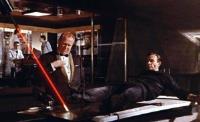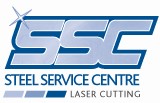 Add My Company
Add My Company
Sign In
Delve into the history of laser cutting
09-06-2016

Laser cutting has been critical to UK precision engineering since it was introduced several decades ago. To explore the technology’s rich history, this special feature will touch upon its evolution from the beginning until the present.
Laser Cutting History
Physicist Max Planck played a fundamental role in developing the laser, having published findings in 1900, by highlighting the relationship between energy and radiation frequency. Planck’s work would inspire Albert Einstein, who is credited with theorising the process to enable the creation of lasers.
Einstein’s discovery came in 1917, but the world would have to wait until 1960, when Theodore H Maiman created the first working laser for Hughes Research Laboratories. Over the next few years, other companies began to create lasers.
In May 1967, Peter Houldcroft is credited as being the first person to perform a gas-assisted laser cutting experiment in an industrial context. Western Electric then developed the process further in 1968 before Coherent started to sell CO2 laser cutters for industrial applications.
As a British scientist, Houldcroft played an integral role in advancing the technology in England during the 1960s. In the 1970s, the UK’s Welding Institute was then responsible for commercialising laser cutting nozzles for industrial use. Ever since then, the technology has played a vital role in the UK engineering.
James Bond’s close encounter with a laser!
Goldfinger laser scene
Sean Connery was actually in danger of being burned in the laser scene of the 1964 Bond film, “Goldfinger”. No need for acting in this scene – the look of fear Connery’s face is genuine. In 1964, computer generated images were just a thing of the future, so the only option was to use a real laser!
According to this article, special effects man, Albert J. Luxford was actually lying beneath the table with an acetylene torch, cutting the table to make it look like the laser was coming from above. It is believed that this is the first on screen sighting of real life laser.
We also had the honour of manufacturing all of the cosmetic stainless steel and brass parts for the roulette wheels and black jack tables in the 2006 Bond film, Casino Royale!
Laser Cutting Evolution
An advance in techniques during the 1990s afforded new possibilities. With the emergence of laser stintering and laminated object manufacturing, laser cutting companies were able to use a wide range of materials, including ceramics, composites, metals and plastics.
Another key development for the 1990s was the creation of the first-ever StereoLithography Apparatus (SLA), which was patented in 1987. Basically, this allowed for laser cutting companies to commence rapid prototyping and manufacturing.
Also during the decade, a number of new laser technologies were created. These included the semiconductor laser in 1994, quantum dot laser in the same year, the pulsed atom laser in 1996 and the gallium-nitride laser in 1997. By the time 2000 arrived, SSC had an array of options for raising laser cutting standards.
Recent Developments
Since 2000, there have been yet more developments to increase the accuracy of laser cutting. At the start of the century, one area of concern was that cutting systems lacked elite precision for complex designs. For example, there would be pinholes in cutting sequences, burn-throughs in materials and rounded corners instead of sharp angles.
Fortunately, those issues have been left in the past. To make that happen, manufacturers didn’t have to focus on the physical quality of their lasers. Instead, they developed more sophisticated algorithms for their design software. In short, the lasers of today now have superior control compared to the early 2000s.
The improvement of software has also streamlined the process for operators, who now have the power to load designs in seconds and calibrate settings with greater clarity. Feedback can also be transmitted to operators in real-time, allowing for corrective measures to be taken.
For many years, SSC has understood the value of using industry-leading software. As a result, the company always considers the software quality next to the physical capabilities of its laser cutters. Both have to be equally in order to deliver the best possible results to clients.
Laser Cutting Uses
SSC has the technology and expertise to perform elite laser cutting across numerous industries, including engineering, construction, architecture, automotive, highways and oil and gas, alongside many others.
You can read about each industry in greater depth by viewing this page. You can also call us on 01889 270241 with any queries about how we can help your business.
For more information on Delve into the history of laser cutting talk to SSC Laser Cutting
Enquire Now
List your company on FindTheNeedle.

